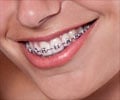Frequently Asked Questions (FAQs)
1. Whom should I consult for evaluating my child's thumb-sucking habit?Consult with a pediatric dentist to assess the situation and determine the appropriate steps for intervention.
2. How to stop thumb sucking?
Encouraging your child to stop thumb sucking involves positive reinforcement. Praise them when they refrain from the habit, and consider using a thumb guard to create a physical barrier. Behavioral interventions, such as rewarding them for not thumb sucking, can be effective. In some cases, consulting with a pediatric dentist or orthodontist for professional guidance may be beneficial.
3. Is thumb sucking good for the baby?
While thumb sucking is a common self-soothing mechanism in infants, prolonged and intense thumb sucking can have negative effects on dental and speech development. It's essential to monitor the intensity and duration of thumb sucking and address any concerns with a pediatric dentist to ensure it doesn't impact oral health.
4. What is the psychology behind thumb sucking babies?
Thumb sucking is often a natural reflex that provides comfort and security for babies. It may stem from the need for self-soothing and is associated with feelings of security. Understanding the emotional triggers that lead to thumb sucking can help parents address the root causes and implement effective behavioral interventions.
5. When should thumb sucking stop?
Most children naturally outgrow thumb sucking between the ages of 2 to 4 years. If the habit persists beyond this age range, especially if it's intense or affecting dental development, intervention may be necessary. Consult with a pediatric dentist to assess the situation and determine the appropriate steps for intervention.
6. What are the alternative behaviors for thumb sucking?
Encouraging alternative soothing behaviors can help redirect the child away from thumb sucking. Providing a comfort item like a soft toy or blanket, teaching deep-breathing exercises, or engaging them in activities that require the use of their hands can be effective alternatives. Positive reinforcement for adopting these alternative behaviors can further support the transition away from thumb-sucking.
 MEDINDIA
MEDINDIA

 Email
Email











